Arrival in Chile is quite a spectacular business, descending to Santiago airport over the snow-capped peaks of the Andes. Chile, stretching 2,500 miles along the south-west coast of South America, straddles three different climate zones, from arid to temperate to cool and rainy. You can trek across deserts, ski in the mountains and enjoy Mediterranean-like sunshine on the coast. The best time to visit is during the spring and summer months, which in Chile is from October to May.
It has a rather chequered recent history, particularly during the turbulent times of Pinochet rule from 1973 to 1990, during which over 200,000 Chileans were killed or exiled. Since then, the president have been democratically elected.
For a country that suffered so recently under violent dictatorship, Chile is outstandingly friendly, open and welcoming today. From the lively bustling streets of Santiago, with its uber cool nightlife, terrace restaurants and pavement bars, to the remote and beautiful islands in the Chiloe Archipelago on the South Pacific coast, there is a lively interest in and big welcome for visitors. And there is much – so much – to soak up in the country. Ideally, take at least a month and travel from the deserts of the north right into the southern archipelago – next stop the Antarctic! But if time is limited, make a bucket list …
5 must-dos in Chile
1. Drink Pisco Sour in Santiago
Make no mistake, Santiago is one cool city. With lots to see of historical interest, plenty of cultural events, gorgeous green spaces, chic places to eat and drink and vibrant nightlife, it’s the perfect city destination. And you have to try a Pisco Sour, practically the national drink, made from Pisco liquor and citrus juice, usually lime. Get over Rio, move on from Buenos Aires, Santiago is the new hip South American destination.
Where to stay: Soak up a bit of Chilean history and an peek into the home life of the former political elite. The Aubrey Hotel in the city’s lively Bellavista area, where the clientele spill out onto pavement tables at buzzing restaurants and bars, is the former home of the influential Domingo Duran Morales family, prominent in politics and business in the 20th century. The boutique hotel is still full of family portraits and heirlooms, with 15 individual and rather quirky bedrooms, landscaped gardens, sun terraces and a pool. It’s right beside the Park Metropolitan, the sixth largest urban park in the world, which adds to the sense of an oasis in the city. Rooms from $195; visit www.theaubrey.com for more information.
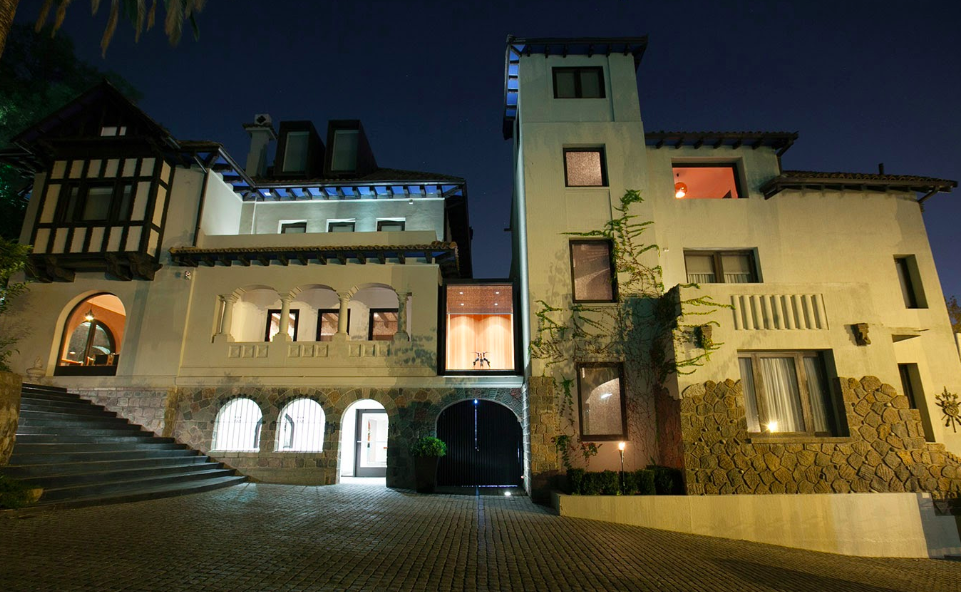
Where to eat: A rather posh treat in the city: soak up the best of Chilean ingredients and native cuisine at the Peumayen restaurant in Bellavista. Translated as ‘dream place’, the 10-course tasting menu (with wines to match) will lull you into a dream, as a vast array uniquely presented dishes parade through; horse steaks, fermented potato, fried pork skin, seaweed salad, lamb tongue, cow’s intestine and a bowl of stew fizzing with a volcanic stone were just a few of the more curious things we tasted; definitely an experience to savour. Expect to pay around $70 per person; visit www.peumayenchile.cl
2. Stop off at Puerto Montt, the gateway to Patagonia
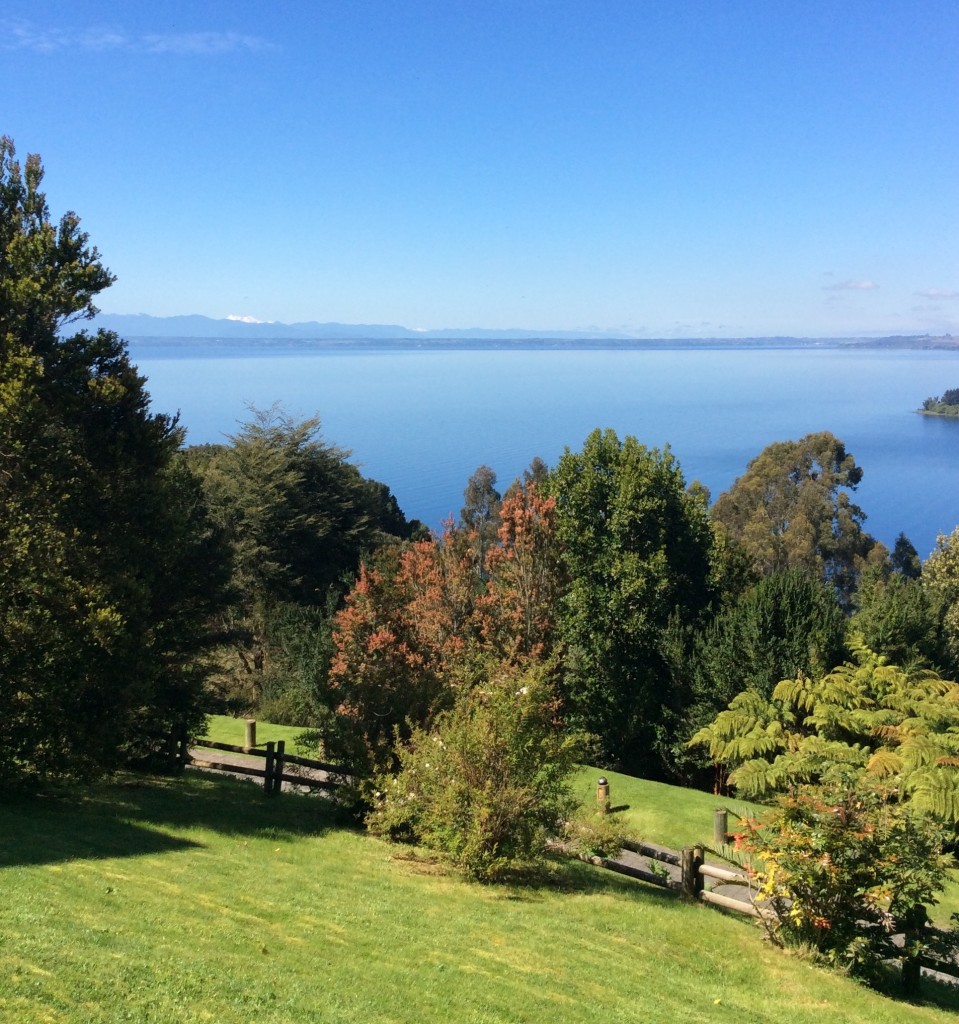
The flight from Santiago to Puerto Montt takes just under two hours. Puerto Montt is a port city and salmon farming one of its main industries; Chile is the second largest salmon producer in the world and you’ll frequently see salmon cages bobbing off piers, salmon factories and laboratories.
Where to eat: Puerto Montt is a seafood-lovers paradise; visit the wonderful pier-side Caleta de Angelmo market to follow a mouth-watering trail around the stalls of super-sized mussels, giant clams, abalone, sea urchin, barnacles, piure – a red-stained fish, coloured by its natural iodine – suspended conger eels, king crabs, vast compacted seaweed slabs and a counter of hot sweet-smelling empanadas. You can eat on the benches around the market or take a wrapped tray home.
Or, try the Chilotito Marina restaurant, around the corner from the pier, after a browse through the handicraft markets, where specialties include cosy llama wool jumpers and scarves, plus jewellery made of the lapis luiz for which the country is famous.
Puerto Montt also marks the start of Patagonia, the sparsely populated region at the southern end of South America, shared by Argentina and Chile. The name comes from the word ‘patagon’, used by Magellan in the 1500s to describe the native people, as he navigated the southern tip of the country, now the Magellan Straits. The native Mapuche people, still live in the region and continue to fight for the return of their lands from the time of colonisation by the Spanish. Charles Darwin carried out extensive studies of the region in the early1800s, and in this century also, the first migration of German Lutherans arrived, invited by the government to farm and develop this sparsely populated area.
3. Eat cake in Puerto Varas
Because of the German migration from the early 1800s, the Patagonian city of Puerto Varas and its surrounding areas is marked by German/Alpine architecture, German-speaking schools and German culture. Set on the edge of the stunning Lake Llanquihue, hazy mist over the water fades every morning to reveal the majestic Osorno and Calbuco volcanoes on the far side of the lake. Chile is home to more than 2000 volcanoes, 500 of which are potentially active; in the last 20 years there have been 15 eruptions.
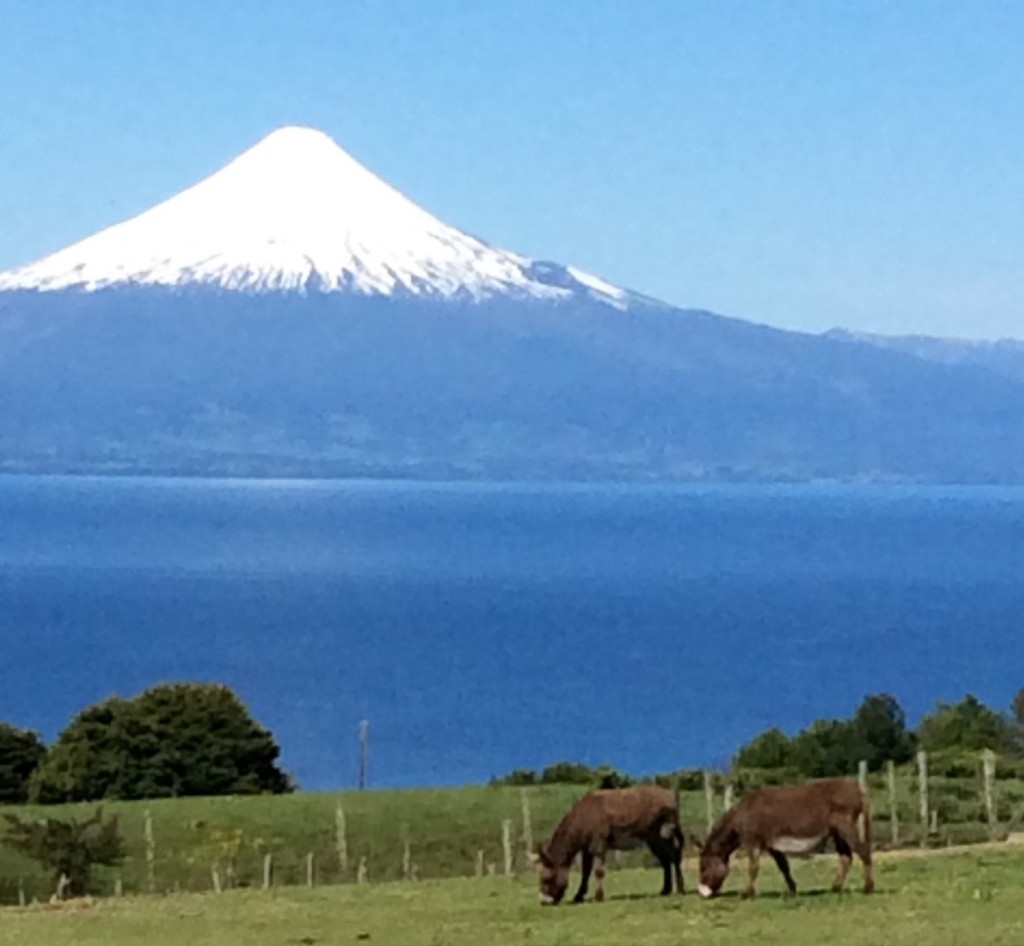
A 60km drive from Puerto Varas, around the edge of the lake, will take you to the town of Frutillar with its traditional German houses, German handicraft boutiques and stunning lakeside concert hall, which attracts acts from the New York Met to this town of 3,000 people.
Where to stay: The Cumbres Puerto Varas Hotel on the edge of Lake Llanquihue offers breath-taking views of the snow-capped Osorno and Calbuco volcanoes. It’s sort of a log cabin, if you can imagine a 5-star log cabin with luxurious light-filled areas where you can lounge in front of a blazing fire, and 90 contemporary bedrooms, many with lake-view balconies and terraces. It’s very much part of its natural surroundings, evidenced as much by its design as by the locally sourced produce in the dining room. And, being part of a German heritage area, this means cakes. Lots and lots of cakes. I count 13 different types one morning on the breakfast buffet. For more information visit www.cumbrespuertovaras.com
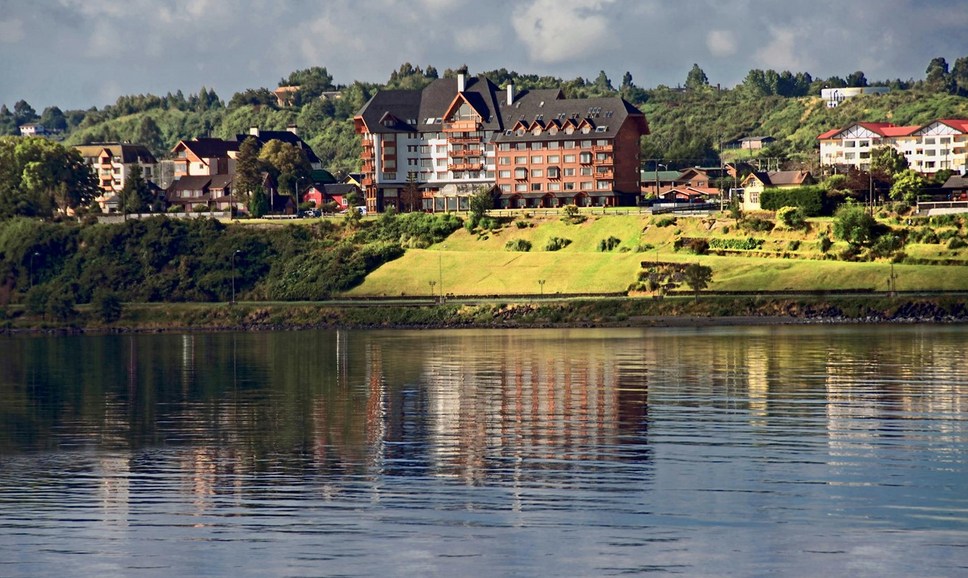
Where to eat: Try the buffet at Fogon Las Buenas Brasas for one of the best selections of Chilean meat and seafood you will find, all constantly freshly prepared by the chefs at the hot plates. Famous for its wild boar roasts and king crab chupes (casserole), it’s set at the end of a winding road with gorgeous views over the lakes, and rambling gardens to roam at the end of your meal where you can hobnob with llamas, donkeys and goats.
4. Drive up a volcano in Vicente Perez Rosales National Park
High up in the Andes, the Vicente Perez Rosales National Park is a must-see on your itinerary in this part of the world. Covering just under 1000 square miles – allow plenty of time! – there are spectacular walks through forests, alongside lakes and waterfalls, with the snowy mountain peaks an impressive backdrop to your photographs.
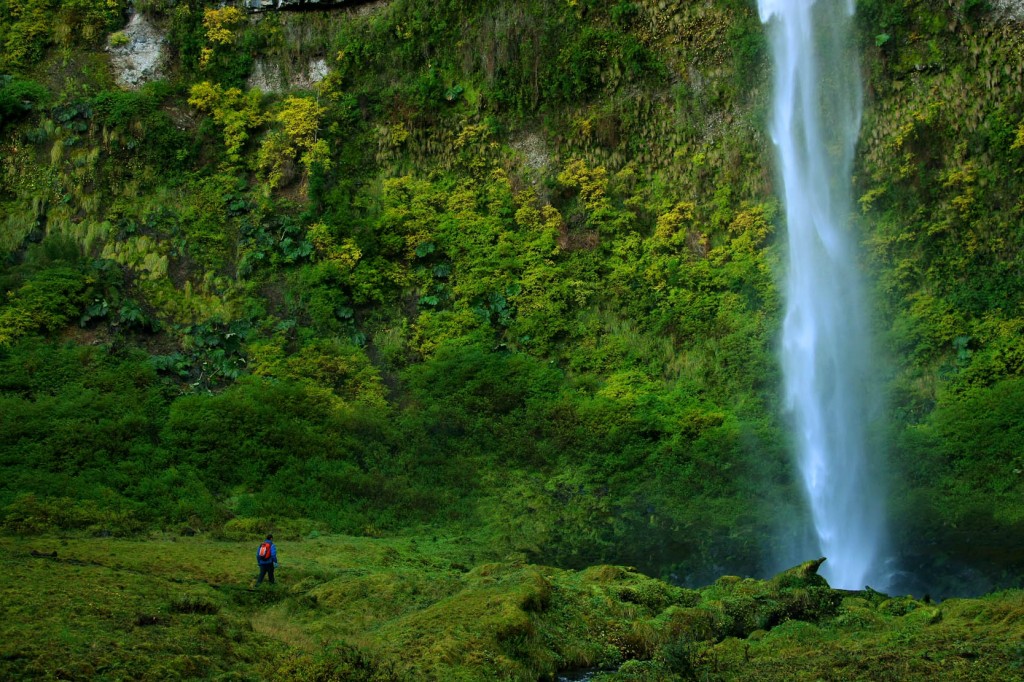
Where to eat: Leaving the Emerald Lake and lava waterfalls behind, we drove up the side of Orsono Volcano – inactive, but nonetheless exciting – to the El Mirador restaurant. It’s 1200 metres high, just where the chair lift starts for trips into the mountain. The restaurant is big, yet cosy and welcoming, and serves hearty fare like homemade soups and huge casseroles, which is perfect fodder in this snowy landscape. It’s snowing heavily when we leave so we forfeit our trip to the top of the volcano to see the glacier.
5. Take the ferry to the island of Chiloé
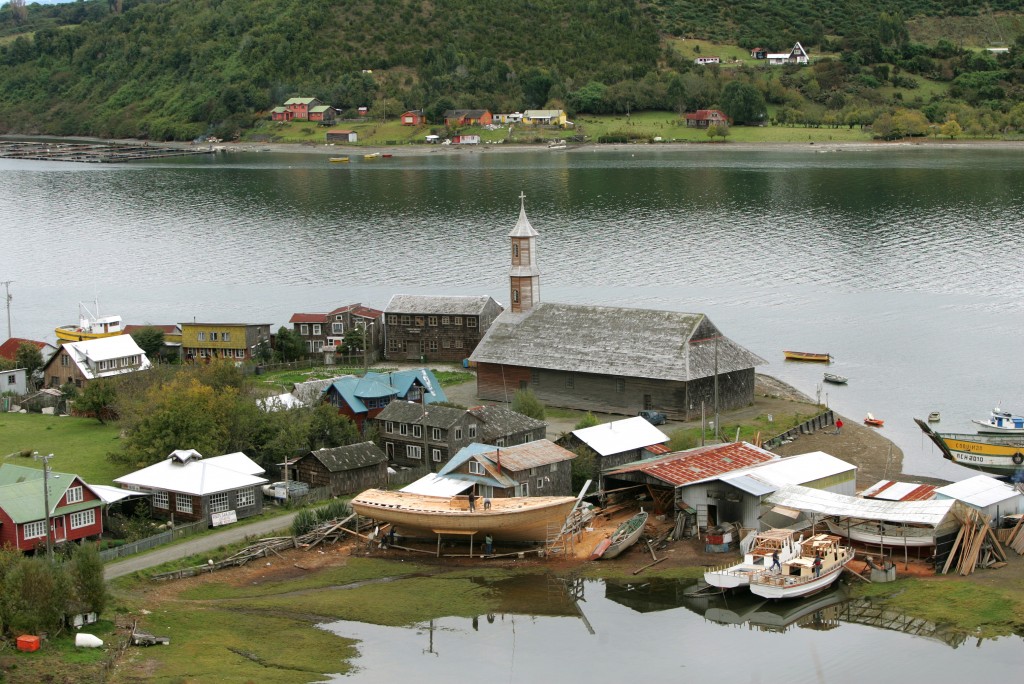
Take a trip off the beaten track and experience remote island living on Isla Grande de Chiloé Island, the largest of the 30 islands in the Chiloé Archipelago, located in the southern Pacific Ocean. Steaming across the Chacao Channel on an early morning ferry is an invigorating way to arrive, you can also fly to Chiloé on LAN Airlines and, once the bridge to the mainland is completed in the next few years, drive there. My advice is to get there quick though, while the island and the archipelago still retains the sense of being on the very edge of the world. As our guide explains, ‘Chiloé today is isolation in an isolated country’.
Community ties on the island are strong and the locals are so welcoming that you may find yourself being invited into somebody’s house for a cup of tea during your visit. Thirty of Chiloé’s churches have designated World Heritage Site status from UNESCO; in total there are over 160 native timber structures, all brightly painted, elaborately decorated and dating from the 18th century.
Where to stay: Hotel Tierra, looking out to sea and the islands of the archipelago, is less of a hotel, more of a posh private pad: an ultra modern wood and stone design with floor to ceiling windows making the most of the view and just 12 bedrooms. Part of the very chic Tierra group, it is ranked in Conde Nast Traveler’s ‘Hot List’ and ‘Best Splurges’.
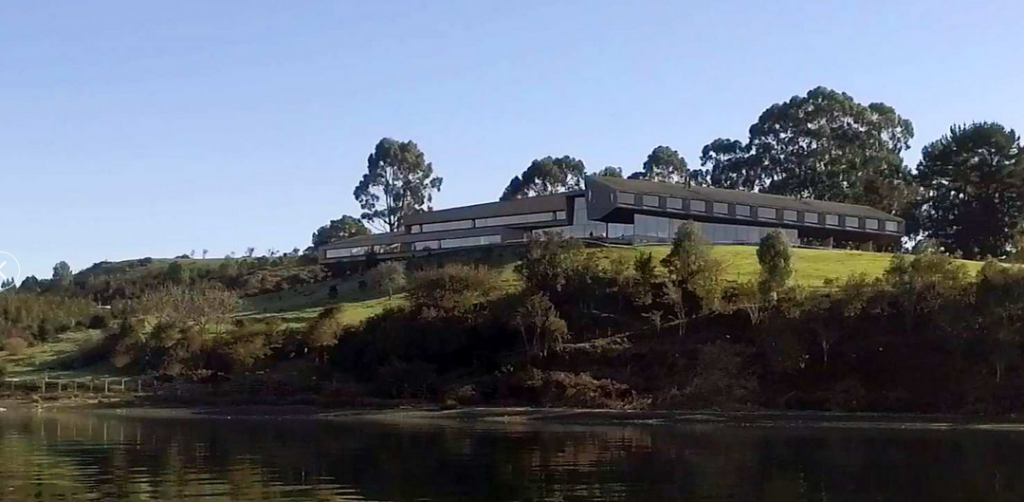
Given its remote location, prices are all inclusive – from $1650 for two nights – and the hotel offers lots of excursions and diversions for its guests. A team of guides offer tailored half-day and full-day outings, including boating, horse riding, biking, cultural trips, trekking and nature walks. The hotel has its own large cruiser, for trips to the islands of the archipelago, with lunch, snacks and drinks supplied on board and the chance to whizz around the bay in a speedboat or go sea kayaking during the outing. Watch out for penguins – we had a whole colony swim alongside the boat for a short while on our journey back from the islands! Visit www.tierrachiloe.com for more information
Chile: more information
For more information on Chile go to www.chile.travel
Chile: getting there
Return flights from London Heathrow to Santiago via Sao Paulo with TAM Airlines and internal flights to Puerto Montt returning from Chiloe with LAN Airlines start from £1,324 including all taxes. To book, visit www.tam.com.br or www.lan.com

